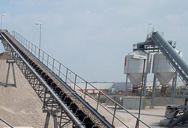
Experimental study of clinker grinding in a ball mill and
2023.6.27 this paper, the method was used to study the collisions between grinding media and grinding media and walls in ball mills, which is the most used unit operation in
More
Experimental study of clinker grinding in a ball mill and
2022.8.18 In this paper, the method was used to study the collisions between grinding media and grinding media and walls in ball mills, which is the most used unit operation in
More
Matrix model of the grinding process of cement clinker in the ball mill ...
2018.2.1 The questions of Portland cement clinker grinding in closed circuit ball mills. Noted that the main task of modeling the grinding process is predicting the granulometric
More
(PDF) Determination of granulometrical composition of the clinker
2020.7.24 This paper presents results regarding the grinding behaviour of two batches of material (clinker) in a ball mill with its own two-step grinding process: the first
More
The effects of grinding media shapes on the grinding kinetics
2013.2.1 Abstract. To investigate the effects of grinding media shapes on the grinding kinetics of ball mill cement clinker, the grinding effects with ϕ20 mm balls and ϕ20 × 20
More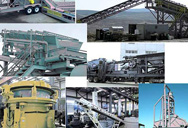
The effects of grinding media shapes on the grinding
2013.2.1 The effect of the media shape on grinding kinetics of cement clinker in a ball mill was investigated. Results indicated that cement clinkers obey first-order breakage
More
Ball-Mill Grinding Kinetics of Cement Clinker Comminuted in
2015.1.27 Abstract. The use of high-pressure grinding rolls (HPGR) prior to ball mills has become a common practice in cement clinker grinding due to significant energy
More
IOP Conference Series: Materials Science and
2023.5.30 The questions of Portland cement clinker grinding in closed circuit ball mills. Noted that the main task of modeling the grinding process is predicting the
More
Effects of circulating load and grinding feed on the grinding
2014.2.1 Samples of the input, output and return material of cement clinker grinding by a CKP mill are collected, based on the field sampling in the industrial mill. The
More
The effects of grinding media shapes on the grinding
2013.2.1 To investigate the effects of grinding media shapes on the grinding kinetics of ball mill cement clinker, the grinding effects with ϕ20 mm balls and ϕ20 × 20 mm
More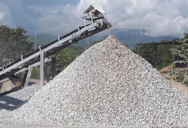
Modelling cement grinding circuits - ScienceDirect
2001.11.1 Modelling and simulation studies were carried out at 26 cement clinker grinding circuits including tube mills, air separators and high pressure grinding rolls in 8 plants. ... A simulation model for an air-swept ball mill grinding coal. Powder Technology, 38 (1984), pp. 255-266. View PDF View article View in Scopus Google Scholar. Benzer et al ...
More
The influence of grinding mechanism on the liberation
2006.3.1 Section snippets Experimental work. Clinker ground in an HPGR equipment was sampled in an industrial cement plant, and after deagglomeration, − 90 μm fraction was separated by sieving to be used for the experiments.The HPGR feed was simultaneously sampled and ground in a laboratory ball mill to give approximately the same percentage
More
(PDF) CONVENTIONAL CLINKER GRINDING -A NEW
2020.4.29 clinker grinding in ball mills. Solid line corresponds to y =x. 2 0 5. 0. 40. 30 80. 6. 0. Presented at the Ultrafine G rinding 06 (UFG 06), June 12-13, Minerals E ngineering International (MEI ...
More
Design of clinker grinding system; mill and separator
Figure 1 presents the design of the clinker grinding system (closed circuit), which consists of a two-chamber ball mill and the separator (Plasari and T heraska, 19 81). Cement clinker is usually ...
More
Matrix model of the grinding process of cement clinker in the ball mill ...
2018.2.1 The questions of Portland cement clinker grinding in closed circuit ball mills. Noted that the main task of modeling the grinding process is predicting the granulometric composition of the finished product taking into account constructive and technological parameters used ball mill and separator. It is shown that the most complete and ...
More
(PDF) Determination of granulometrical composition of the clinker
2020.7.24 The energy consumption of grinding is the subject of many studies, especially in the case of ball mills for grinding clinkers [8, 9], fuels [10], iron ore [11], hematite ore [12], sulfide ore [13 ...
More
Review on vertical roller mill in cement industry its
2021.1.1 The grinding process in ball mills and vertical roller mills is fundamentally different [15]. Following are advantages of VRM over Ball Mills with reference to these issues: - • Strong drying ability - Inlet hot air from Kiln can dry materials with 20% water content. (max moisture 20% vs. 3% in ball mill) [15], [16]. •
More
An industrial comparative study of cement clinker grinding
2012.5.1 The clinker grinding stage accounts for approximately 40% of the electric energy consumed in cement production. Because of such a high level of energy demand and the inherent energy inefficiency of conventional ball mill grinding, the cement industry has continually searched for new grinding mill designs and/or grinding system
More
A Review on Pyroprocessing Techniques for Selected Wastes
2020.2.9 Grinding differs with the pyroprocessing process (kiln type) used. In dry processing, the materials are ground into a powder that can flow in horizontal ball mills or in vertical roller mills. In a ball mill, steel-alloy balls are responsible for decreasing the size of the raw material pieces in a rotating cylinder.
More
The influence of grinding technique on the liberation of clinker ...
2007.9.1 Besides ball mill, different types of mills which have different grinding mechanisms such as high pressure grinding rolls (HPGR), vertical mill and Horomill are being used in cement industry. Particularly HPGR has a great acceptance in cement industry for almost 20 years because of its ability to reduce specific energy consumption up to 40%.
More
Correlating common breakage modes with impact breakage and ball
2020.11.1 Approximately 35% of the mill volume, including the interstices within the ball bed, was loaded with 25.4 mm steel balls weighing 8 kg. Each grinding test was performed with 0.63 kg of the chromite ore or clinker for various grinding times from 0.25 min up to 16 min. Mill product size distributions were obtained by dry sieving. 3.
More
IOP Conference Series: Materials Science and Engineering
2022.5.8 during grinding of the clinker in the traditional way in a ball mill equal to ϕ1 = 0.3. When the length of the first chamber is changed (Figure 2a) in the range from l 1 = 0.42 m to l 1 = 0.88 m, the indicated capacity varies in dependence with extremum at l 1 = 0.6 m.
More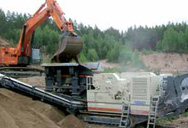
polysius® modular grinding plant
2022.5.23 plant. Boosting modular grinding plants to highest cement quality. polysius®booster mill kit. Reliability of ball mill + flexibility and efficiency of the booster mill (dry agitated bead mill) to: Boost capacity + 10 tph. Reduce clinker factor. Not just a ball mill! plant. Operating modular grinding plants at a whole new level.
More
Effects of circulating load and grinding feed on the grinding
2014.2.1 Clinker grinding consumes about one third of the total amount of energy needed to produce cement [1]. ... Herein, an innovative approach for determining the grinding media system of ball mill based on grinding kinetics and linear superposition principle was proposed. The optimal media ball size of −2 + 0.45 mm, −0.45 + 0.15 mm,
More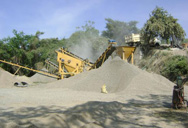
Cement grinding optimisation - ScienceDirect
2004.11.1 The efficiency of fine grinding in the second compartment is largely controlled by the size of grinding balls. Due to limitation of the mill’s rotational speed, the smallest ball size is usually restricted to about 15 mm. Cement grinding using stirred mills (Pilevneli and Azizli, 1999) indicates that using smaller media (5–8 mm range ...
More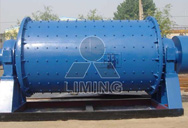
Cement grinding optimisation - ScienceDirect
2004.11.1 grinding the cement clinker nodules to 100% passing 90 μm in a dry circuit. Grinding occurs at the beginning and the end of the cement making process. Approximately 1.5 tonnes of raw materials are required to produce 1 tonne of finished cement. The electrical energy consumed in the cement making process is in order of 110 kWh/tonne
More
Portland Cement Clinker - an overview ScienceDirect Topics
At most manufacturing plants the ball mill is used to grind the clinker and, since the production rate is directly related to the amount of electrical energy supplied, the power of the electric motor used to turn the mill is a first-order measure of the output achieved. Mills vary in their power input from as little as 200 kW up to 10000 kW.
More
Effects of grinding aid dosage on circuit performance and
2020.12.30 For this purpose, influences of 250, 350 and 450 g/t of dosages of an amin-based commercial GA on the cement grinding circuit was compared with the condition in which GA was not used. The effects of GA dosage on the ball mill and air classifier were examined in detail considering the change in the residence time of the material.
More
Energy-Efficient Technologies in Cement Grinding
2016.10.5 The energy consumption of the total grinding plant can be reduced by 20–30 % for cement clinker and 30–40 % for other raw materials. The overall grinding circuit efficiency and stability are
More
Quantifying the effect of clinker grinding aids under laboratory ...
2015.10.1 The length of grinding time for each run is adjusted until the mass of the oversize fraction is consistently 2.5 times greater than the undersize. Under those conditions, the Bond test is considered as a locked-cycle process as it mimics the steady-state grinding of a closed-circuit ball mill with a classifier performing at CL of 250%. 4.2.3.2.
More
A comparative analysis of steel and alumina balls in fine
2023.5.1 The aim of this study was to examine the breakage kinetics of pre-milled cement clinker in a lab-scale ball mill loaded with steel or alumina balls of 20, 30, and 40 mm sizes as well as their mixtures. ... Ball-mill grinding kinetics of cement clinker comminuted in the high-pressure roll mill. Miner. Process. Extr. Metall. Rev., 36 (2015), pp ...
More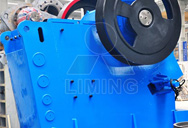
Effects of Mill Speed and Air Classifier Speed on Performance of
2020.4.18 Ball mill is grinding equipment which is used to reduce the size of clinker into cement. It uses grinding media in the form of balls. Clinker coming from the silo is sent into hopper and mill for impact action. ... The feed to the ball mill consists of clinker about 95 percent and remaining are grinding aids like gypsum, ash and ethylene glycol ...
More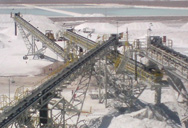
The influence of grinding mechanism on the liberation
2006.3.1 Clinker ground in an HPGR equipment was sampled in an industrial cement plant, and after deagglomeration, − 90 μm fraction was separated by sieving to be used for the experiments.The HPGR feed was simultaneously sampled and ground in a laboratory ball mill to give approximately the same percentage of − 90 μm as compared to the
More
Effects of Mill Speed and Air Classifier Speed on
2020.5.12 950 rpm. Blaine is the important characteristic of ball mill which is influenced by the mill speed and separator speed. Ball mill is grinding equipment which is used to reduce the size of clinker into cement. It uses grinding media in the form of balls. Clinker coming from the silo is sent into hopper and mill for impact action. Clinker is ...
More
How does the ball mill produce cement - LinkedIn
2022.12.22 A ball mill is a key piece of equipment in the production of cement. It is primarily used to grind the raw materials that go into the production of cement, such as limestone, clay, and iron ore.
More
Investigation of flow dynamics of porous clinkers in a ball mill
2019.12.1 Ball mills are usually used for grinding the clinkers to obtain the fine cement powder. A ball mill for clinker grinding usually consists of two chambers separated by a diaphragm. The first chamber is for crushing the clinker whereas the second chamber is for fine grinding. The first chamber contains large grinding media that can crush the ...
More
Effect of High Pressure Grinding Rolls (HPGR) pre-grinding and ball ...
2016.6.1 High pressure grinding rolls (roller presses) are used in both cement raw materials (limestone, clay, shale etc.) and cement grinding stages. The energy consumption is 2.5–3.5 kW h/t and about 10 kW h/t when recycling of the material is used.A HPGR consumes 30–50% less specific energy as compared to a ball mill which indicates higher
More
SikaGrind® for vertical roller mills
2 天之前 RRSB, cements from ball mills generally have a rather low slope [n’]. In a VRM the grinding takes place by pressure and shear force. The clinker passes within seconds between roller and table. The energy input to the material during one passage between grinding rollers and grinding track is relatively low. The thick-
More
